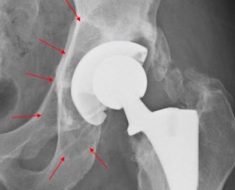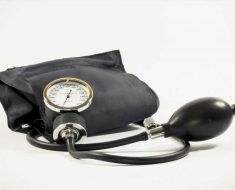An updated American Cancer Society guideline says colorectal cancer screening should begin at age 45 for people at average risk, based in part on data showing rates of colorectal cancer are increasing in young and middle-aged populations.
The new recommended starting age is based on colorectal cancer (CRC) incidence rates, results from microsimulation modeling that demonstrate a favorable benefit-to-burden balance of screening beginning at age 45, and the expectation that screening will perform similarly in adults ages 45 to 49 as it does in adults for whom screening is currently recommended (50 and older). The updated recommendations are published early online in CA: A Cancer Journal for Clinicians, a peer-reviewed journal of the American Cancer Society.
The American Cancer Society recommends:
- Adults ages 45 and older with an average risk of colorectal cancer undergo regular screening with either a high-sensitivity stool-based test or a structural (visual) exam, depending on patient preference and test availability.
- The change in starting age is designated as a “qualified recommendation,” because there is less direct evidence of the balance of benefits and harms, or patients’ values and preferences, related to CRC screening in adults aged 45-49 since most studies have only included adults aged 50+. The recommendation for regular screening in adults aged 50 years and older is designated as a “strong recommendation,” on the basis of the greater strength of the evidence and the judgment of the overall benefit.
The recommended options for colorectal cancer screening are: fecal immunochemical test (FIT) annually; high sensitivity guaiac-based fecal occult blood test (HSgFOBT) annually; multi-target stool DNA test (mt-sDNA) every 3 years; colonoscopy every 10 years; CT colonography (CTC) every 5 years; and flexible sigmoidoscopy (FS) every 5 years.
The new guideline does not prioritize among screening test options. Given the evidence that adults vary in their test preferences, the guidelines development committee emphasized that screening rates could be improved by endorsing the full range of tests without preference. The American Cancer Society has developed new materials to facilitate conversations between clinicians and patients to help patients decide which test is best for them.
“When we began this guideline update, we were initially focused on whether screening should begin earlier in racial subgroups with higher colorectal cancer incidence, which some organizations already recommend,” said Richard C. Wender, M.D., chief cancer control officer for the American Cancer Society. “But as we saw data pointing to a persistent trend of increasing colorectal cancer incidence in younger adults, including American Cancer Society research that indicated this effect would carry forward with increasing age, we decided to reevaluate the age to initiate screening in all U.S. adults.”
Colorectal cancer incidence has declined steadily over the past two decades in people 55 and over due to screening that results in removal of polyps, as well as changes in exposure to risk factors, but there has been a 51% increase in colorectal cancer among those under age 50 since 1994. Death rates in this age group have also begun to rise in recent years, indicating that increased incidence rates do not appear to be solely the result of increased use of colonoscopy. A recent analysis found that adults born around 1990 have twice the risk of colon cancer and four times the risk of rectal cancer compared with adults born around 1950, who have the lowest risk.
While the colorectal cancer incidence rate among adults 45 to 49 is lower than it is among adults 50 to 54 (31.4 vs. 58.4 per 100,000), the higher rate in the 50-54 age group is partially influenced by the uptake of screening at age 50, which leads to an increase in the incidence rate due to detection of prevalent cancers before symptoms arise. Since adults in their 40s are far less likely to be screened than those in their 50s (17.8% vs. 45.3%), the true underlying risk in adults aged 45-49 years is likely closer to the risk in adults ages 50 to 54 than the most recent age-specific rates would suggest. Importantly, studies suggest the younger age cohorts will continue to carry the elevated risk forward with them as they age.
Organizations have increasingly relied on modeling to evaluate alternative CRC screening strategies, including variations in the age to start and stop screening. Two of three microsimulation models conducted for the 2016 United States Preventive Services Task Force (USPSTF) screening recommendations suggested that starting colonoscopy screening with an interval of 15 years at age 45 vs age 50 provided a slightly more favorable balance between the benefits and burden of screening. However, the USPSTF elected not to recommend the younger starting age in 2016, judging the estimated additional benefit to be “modest,” and also noting that one of the three models did not corroborate the additional benefit and there was a lack of empirical evidence to support the change.
A new modeling study commissioned by ACS for this review extended these analyses by incorporating more recent studies of the rising incidence trends in younger adults and showed that multiple screening strategies beginning at age 45, including colonoscopy at the conventional 10-year interval, had a more favorable benefit to burden ratio with more life-years gained compared with starting screening at age 50.
Source: Read Full Article





